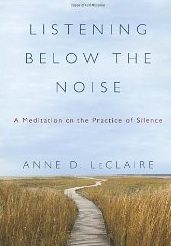 Teenagers are moody. Absolutely. Fluctuations in hormones cause angry outbursts, irritability, emotional hysteria, defiant behavior, and weepiness. So it’s very difficult to tease apart teenage drama from legitimate depression and other mood disorders. However, it’s worth the effort because depression and other mood disorders that begin in adolescence often become much more serious and difficult to treat as adult disorders.
Teenagers are moody. Absolutely. Fluctuations in hormones cause angry outbursts, irritability, emotional hysteria, defiant behavior, and weepiness. So it’s very difficult to tease apart teenage drama from legitimate depression and other mood disorders. However, it’s worth the effort because depression and other mood disorders that begin in adolescence often become much more serious and difficult to treat as adult disorders.
A 1996 study by the National Institute of Mental Health estimated that more than 6 percent of adolescents, between the ages of 9 and 18 years old, suffered from depression during the six-month period of the study, and almost five percent suffered from major depressive disorder. Moreover, many of the 20 percent of people who suffer from depression at some point in their lives have experienced depression as teenagers. I am part of that statistic, as my symptoms were definitely there in my adolescent years, and, had I been treated for depression at that time, I may not have developed such a severe mood disorder in my adult life. Here are eight tips teenagers might use to manage their depression.
1. Get the Right Diagnosis
In his book, “Adolescent Depression,” Francis Mark Mondimore, M.D, a psychiatrist at the Johns Hopkins University School of Medicine, compares getting the right diagnosis of a mood disorder to discovering a piece of real-estate in a prime location. In other words, swap the phrase “location, location, location” with “diagnosis, diagnosis, diagnosis” because it is by far the most important factor in trying to get help for your mood disorder. A proper diagnosis is the foundation upon which a treatment program is built, so if you’re starting with the wrong one, your attempts at getting well are severely jeopardized.
2. Find the Right Doctor or Therapist
The second most important thing you can do is to find the right doctor and the right therapist for you. Don’t settle. If there is any question in your mind, then go for a second opinion. I can’t stress this point enough because I am convinced I would never have gotten well had I stayed with any of the doctors I visited before finding the right one for me. It takes energy, effort, and time. But so does depression and anxiety—they can rob you years of your life. If your psychiatrist or therapist is threatened by your seeking a second opinion, that’s all the more reason to shop elsewhere, because a good doctor will welcome another objective opinion and appreciate the homework done on your behalf. You may only need your doctor for a few months or a year, but it’s good to think long term anyway. Would you feel comfortable seeing this person for a few years? If not, start shopping.
3. Notice the Negative Thoughts
Can you hear your negative talking? “I’m a failure.” “I should give up.” “He hates me.” These thoughts manipulate our feelings, so that what begins as a negative thought ultimately leads to real symptoms of depression and anxiety. However, the good news is that by merely recognizing them, we’ve won half the battle. Dr. David Burns lists ten forms of distorted thinking in his bestseller, “Feeling Good: The New Mood Therapy.” Among them are all-or-nothing thinking (“There is nothing useful about this class”), overgeneralization (“It’s ALL bad”), jumping to conclusions (“They think I’m a loser”), and “should” statements (“I should have learned it by now”).
4. Outsmart the Brain
In her insightful book, “Freeing Your Child From Negative Thinking,” Tamar Chansky explains how, with some exercising, you can outsmart your brain. She explains:
The brain has two sides, which respond to very different input. When we are afraid or confronted with a negative situation, circuits in our right prefrontal cortex are firing away, whereas in more positive situations the action is in the left brain. The left prefrontal cortex is active when there is something safe to approach, whereas when the right side is buzzing, as with anxiety or negative thoughts, we avoid or don’t approach. The goal is to create passageways, a bridge over troubled water … to travel from one side of the brain to the other. The more [you] practice switching perspectives, the more automatic that action will become, and overtime, [the] brain will learn to switch on its own.
5. Eat Mood Boosters
Just as certain foods and drinks can lead to depression—processed white flour, sweets, caffeine, sodas—others actually lift your mood. Many studies have shown that omega-3 fatty acids are mood lifting agents that can alleviate depression. Some foods that are rich in omega-3: oily fish like salmon, mackerel and sardines; ground flaxseeds, walnuts, and omega-3 fortified eggs. Vitamin B 12 and Folate are also important for mood. Some scientists believe that these vitamins create serotonin, which normalizes mood. Vitamin D also increases serotonin and can be especially helpful with Seasonal Affective Disorder (SAD). Milk and soy milk are full of Vitamin D, as are egg yolks and fish with bones.
6. Quit the Booze
There is one beverage that you must absolutely stay clear of: booze. Not only is it going to worsen your depression and anxiety, but it can actually alter your brain during the teenage years, making needless work for you later on in life. Mondimore writes:
Substance abuse in young people is thought to interfere with the brain’s developmental process and may disrupt brain development in permanent ways that, currently, we can only guess at….For individuals undergoing treatment for mood disorders, getting intoxicated interferes with the therapeutic process to relieve depression or to stabilize mood. A simple way of thinking about this is that getting intoxicated depletes the chemicals that antidepressants are trying to boost.
7. Sweat
Working out your distress quite literally–by running, swimming, walking, or kick-boxing–is going to give you immediate relief. On a physiological level. Because exercise increases the activity of serotonin and/or norepinehrine and stimulates brain chemicals that foster growth of nerve cells. In fact, some recent studies have suggested that regular exercise can be just as effective as antidepressants to lift a mood. And emotionally. Because by wearing a stylish sweat suit and sneakers we become the sergeant with a whistle, taking charge of our health and giving orders to our mind and body, even if our limbic system, tummies, and thighs are in sorry shape and curse us for forcing them to move or do a sit-up.
8. Ask For Help
The smartest thing I ever did in high school was ask for help from a kind teacher that I respected. This first step began a path of recovery for me that changed my life. Sometimes it’s easier to approach someone outside your family because a parent wants to believe everything is fine and might not be able to face real problems. I urge you to get the help you need by asking an adult that you know won’t judge you but will guide you toward the appropriate resources.

